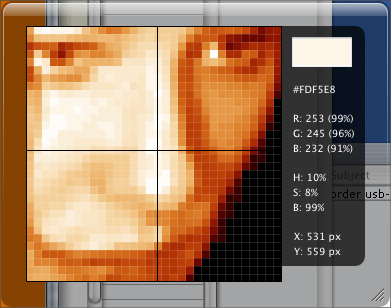The Daily Report
26 November 2003 :::
11 am est
Tears for Istanbul
In 1998 my then-girlfriend and I spent two weeks in Istanbul as guests of one of its biggest daily newspapers. When I returned to New York, I began writing a memoir of our time there. I never finished it.
Here is one of the stories I always meant to tell.
After spending a morning in the famous Bazaar, we wandered into a courtyard where street vendors sold spices, jewelry, fabrics, and livestock. The courtyard led to a narrow alley populated with shoppers and vendors. That alley wound into another that was even more densely crowded.
Suddenly the police arrived and began shutting down the booths of unlicensed vendors. The crowd surged forward into a maze of back alleys. By the time we escaped the throng, we found ourselves in an alley within an alley within an alley. The police had blocked the way back. We would have to find our own way out.
The alley in which we found ourselves teemed with turbaned men toting heavy Turkish carpets on their backs. On the city’s main streets, almost everyone we encountered spoke English. But the rug-hauling laborers we encountered at the heart of the maze spoke only Turkish, and we knew not one word of the language.
A hearty man in his 70s noticed our predicament and approached.
I said, “Sultanahmet,” the name of a section of the city with which we were familiar.
Gesturing for us to follow him, the hearty man swiveled on his heel and began walking briskly away. We dashed after. Although he appeared to be nearly twice our age, we had a tough time keeping up with him as he led us around corners, down alleys, and up steep hills.
The journey took twenty minutes or more and covered several miles of cobblestoned streets built by the Romans. Our guide never spoke; he simply led.
Suddenly, at the crest of a hill, we saw before us the world-famous mosques of Sultanahmet.
The old gentleman turned to us, smiled, bowed, and strolled away before we could thank him.
He had hiked several miles out of his way to help two American strangers, simply because he saw that we were lost.
That, in a nutshell, is Istanbul to me. I never met kinder or more gracious people anywhere.
During my two weeks in that city, I never heard a harsh word said about Americans or any other national group. No one ever uttered an ethnic or religious slur. They did not seem to have negative words for people who are different — they merely acknowledged the difference.
Pulp Fiction was popular in Istanbul. One wonders how they managed to write subtitles for that movie.
If the gentleman shows up in Indochina, I want a fellow to spring out of a bowl of rice and teach him some manners.
Now people are dying in Istanbul and President Bush says Turkey is a “front” in the war against terrorism. I don’t know what that means. I only know that I am sad. :::
21 November 2003 :::
4 pm est
A List Apart 164 (double issue)
In this week’s issue of A List Apart, For People Who Make Websites:
Retooling Slashdot with Web Standards
by Daniel M. Frommel
A look at the markup behind Slashdot.org that demonstrates how simple — and cost-effective — the switch to a standards-compliant Slashdot could be.
JavaScript Image Replacement
by Christian Heilmann
Perhaps it’s time to consider the ups and downs of a JavaScript-based alternative to the Fahrner Image Replacement technique. This version uses plain vanilla XHTML with no special IDs or CSS tricks. :::

Digital Web: Shoestring reviewed
In this week’s Digital Web Magazine, James McNally reviews Web Design on a Shoestring: “Where Carrie Bickner’s book distinguishes itself is in its emphasis on the nuts and bolts. [It] demonstrates how to actually build pages, and not just sites. Carrie has an engaging and friendly voice. She delves into subjects that other authors have until now ignored.” :::
18 November 2003 :::
12 noon est
Favicon fest
Favicons are tiny icons that show up in a modern browser’s address bar and bookmarks and on Gecko browser tabs. Many zeldman.com readers know how to create them, but some don’t. For those who don’t, Noel Jackson offers a mini-tutorial on creating favicons in Mac OS X using GraphicConverter (an inexpensive shareware program that comes free with some OS X installations) and Photo Matt shows how to do it in Windows. (We do it with Iconfactory’s IconBuilder Pro, a full-featured Photoshop plug-in.) :::

It’s a wrap!
The Jewelboxing™ System claims to be the “coolest, most modern, best engineered DVD/CD case, ever.” Ideal for showreels, presentations, portfolios, and award show entries, the system pairs high quality CD/DVD cases and precut liners, inserts, and labels with custom templates for leading design programs. Add your Jewelbox to the inspirational gallery. Jewelboxing is a co-production of Coudal Partners, Super Jewel Box International BV, and Super Jewel Box USA. :::
Pass on LIFT Text Transcoder
To the site owner or manager who wants to do the right thing, it sounds like a good idea: UseableNet’s LIFT Text Transcoder is a server-based tool that generates text-only versions of your web page on the fly. But text-only is not the same as accessible. (Indeed, good design helps make web pages more accessible.) Remove design from an inaccessible form, and what have you got? An inaccessible form with no design.
Baseline accessibility is not hard, but it is not push-button automatic. UseableNet makes products that can help you craft more accessible sites. But LIFT Text Transcoder is not one of them. If you’re serious about making your site accessible, pass on Text Transcoder and try these resources instead:
- A List Apart: Topics: Accessibility
- Joe Clark’s Building Accessible Websites (available online and at Amazon)
- Mark Pilgrim’s Dive Into Accessiblity ( “30 days to a more acccessible website”)
- Accessify Forum’s Guild of Accessible Web Designers
- Accessible Usable Design (Anitra Pavka’s weblog)
- Macromedia Accessibility Center (helpful for Flash and Dreamweaver users) :::
14 November 2003 :::
1 pm | 10 am | 7 am est
A List Apart 163 (double issue)
In this week’s issue of A List Apart, For People Who Make Websites:
How to Save Web Accessibility from Itself
by Joe Clark
An upcoming revision to the Web Accessibility Guidelines is in danger of becoming unrealistically divorced from real-world web development, yielding guidelines that are at once too vague and too specific. Your expertise and input can help create realistic guidelines that work.
Tackling Usability Gotchas in Large-scale Site Redesigns
by Zeldman
Redesigns can solve old usability problems while creating new ones that must be solved in turn. From the lessons of the ALA 3.0 redesign comes this quick study in remapping content without frustrating readers. :::
xScope debuts! Six design tools in one
ARTIS Software and The Iconfactory announce xScope v1.0, a powerful suite of tools for measuring, aligning, and inspecting onscreen graphics and layouts. We beta tested this extraordinary suite and recommend it highly for any new media designer who uses Mac OS X. It ships with:
- Rulers: On-screen rulers that measure distances and angles
- Screens: A dynamic view of smaller screen sizes & browser content areas
- Loupe: A magnifying glass that gives you a close-up view of your work
- Guides: Markers for precise horizontal and vertical alignment
- Frames: Markers for precise width, height & origin alignment
- Crosshair: Finds the exact location on screen
All xScope’s tools may be accessed via menu bar icons, a floating toolbar, or user-definable hotkeys. xScope is available from the Iconfactory for $14.95 USD. Registered users of ARTIS Software’s Screen Tools can upgrade for just $5 USD. :::
ReUSEIT winners announced
The voting is over, the tallying complete, and the winners of the ReUSEIT competition have been announced. Mike Pick’s Kraftsman took first prize. First runner-up: Jonathan Biggs’s Only a Few Graphics. Second runner-up: Ray Henry’s Minimal Use. Bob Sawyer, competition founder, says: “Really, we have 53 winners. Everyone who entered is a winner in our book.” We agree. :::
One-liners
- Waffle presents a loooooonnnng interview with your faithful correspondent.
- Life beyond Verdana: Bitstream Vera Fonts for Linux, Windows, and Mac OS X.
- Colors 58 Photo Studio.
- One bowl away from enlightenment (CSS Zen Garden, enlarged to show texture).
- Hey, nice titles!
- Fine free pixel fonts by Cal Henderson.
- Let’s slay some Orcs! Yes! Patent office to re-examine Eolas patent.
- Blogstakes announces winners of the Clip-N-Seal sweepstakes. Next up: winners of the Browsercam contest.
- Running Multiple IE versions in Windows.
- Visibone automated font survey.
- Unobtrusive DHTML, and the power of unordered lists.
- Pixel power.
- Hey, nice blog! It’s chokeSPEAK.
- Corporate Identity: 15 Trends Taking Shape In Logo Design. Not bad of its kind.
- Textism improves its Word HTML Cleaner.
- H. Champ revamps.
- Shirky waxes provocative.
- Inaccessibility of Visually-Oriented Anti-Robot Tests.
- Digital Web Magazine: an interview with Joe Clark.
- Blogosphere redesigns with hat tip to Dug Falby’s ALA article, Flexible Layouts with CSS Positioning.
- Panic and Iconfactory’s CandyBar 1.6.1 is out! Replace those dull, overwrought default OS X icons with way better ones.
- Mozilla 1.5 is here.
- Mozilla Firebird 0.7 browser. Fast and good but still funky in its handling of ALA’s CSS layout.
- Surfin’ Safari: The painful reality of browser bugs.
- K-Meleon 0.8 browser released. :::

